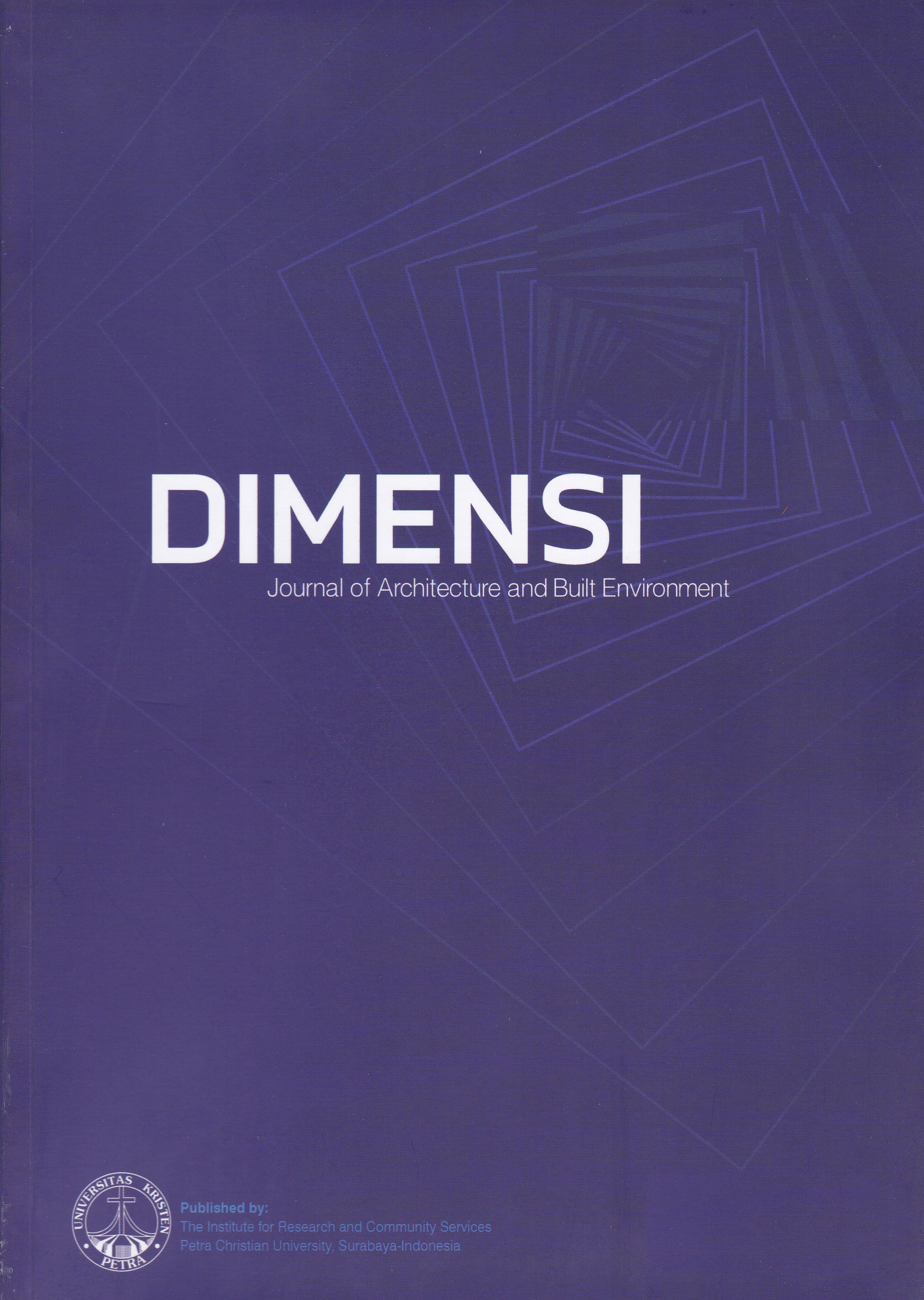POSITIONING ARCHITECTURE IN CULTURE
DOI:
https://doi.org/10.9744/dimensi.47.1.27-34Keywords:
Architecture, Culture, Form, Function, MeaningAbstract
Architecture could be defined as the relation of form-function-meaning in a cultural framework. This paper aimed to understand the position of architecture in culture. The method used was correlation and interpretation. Correlation method connected architectural forms with cultural forms, while interpretation method provided an interpretation of the relationship between the two, and the position of architecture in culture. The results showed that architecture as part of culture had almost the same form between the two. Architectural term included forms, functions, meanings, and ideas, while cultural term included physical culture, behavior patterns or social, value, and ideas systems. The architectural form became part of the physical form of culture, the architectural function became part of the form of social cultural system, the architectural meaning became part of the cultural value system, and the architectural ideas became part of the cultural ideas systems
Downloads
References
Capon, David Smith (1999). The Vitruvian Fallacy: Architectural Theory Volume One, John Willey&Sons, New York.
Geertz, Clifford (1973). The Interpretation of Culture, Basic Books Inc., New York.
Koentjaraningrat (1996). Pengantar Antropologi I, Rineka Cipta, Jakarta.
Krier, Rob (2001). Komposisi Arsitektur, Erlangga, Jakarta.
Leupen, B., et al (1997). Design and Analysis, van Nostrand Reinhold, New York.
Linton, Ralph (1936). The Study of Man: an Introduction, Appleton-Century, New York.
Malinowski, Bronislaw (1988). The Group and The Individual in Functional Abalysis. High Points in Anthropology, Alfred A. Knopf,
New York.
Morgan, Morris Hicky (1914). Vitruvius: The Ten Books on Architecture, Harvard University Press., Cambridge.
Van Peursen, C. A. (1988). Strategi Kebudayaan, Kanisius, Yogyakarta.
Rapoport, Amos (1977). Human Aspects of Urban Form, Pergamon, Toronto.
-----, (1984). Asal Mula Budaya Arsitektur. Pengantar Arsitektur, Erlangga, Jakarta
Ratna, Nyoman Kutha (2010). Metodologi Penelitian Kajian Budaya dan Ilmu-Ilmu Sosial Humaniora Pada Umumnya, Pustaka Pelajar, Yogyakarta.
Roth, Leland M & Clark, Amanda. Roth (2014). Understanding Architecture: Its Elements, History, and Meaning, 3rd ed., Westview Press., Colorado.
Salura, Purnama & Fauzi, Bachtiar (2012). The Ever-Rotating Aspects of Function-Form-Meaning in Architecture. Journal of Basic and Applied Scientific Research, TextRoad Publication, 2 (7), p. 7086-7090.
Suparlan, Parsudi (1996). Antropologi Perkotaan. College Textbook, University of Indonesia.
----- (1995). Antropologi Dalam Pembangunan. College Textbook, University of Indonesia.
Van de Ven (1991). Ruang Dalam Arsitektur, Gramedia Pustaka Utama, Jakarta.
Downloads
Published
How to Cite
Issue
Section
License
Authors who publish with this journal agree to the following terms:
- Authors retain copyright and grant the journal right of first publication with the work simultaneously licensed under a Creative Commons Attribution License that allows others to share the work with an acknowledgement of the work's authorship and initial publication in this journal.
- Authors are able to enter into separate, additional contractual arrangements for the non-exclusive distribution of the journal's published version of the work (e.g., post it to an institutional repository or publish it in a book), with an acknowledgement of its initial publication in this journal.
- Authors are permitted and encouraged to post their work online (e.g., in institutional repositories or on their website) prior to and during the submission process, as it can lead to productive exchanges, as well as earlier and greater citation of published work (See The Effect of Open Access).



















